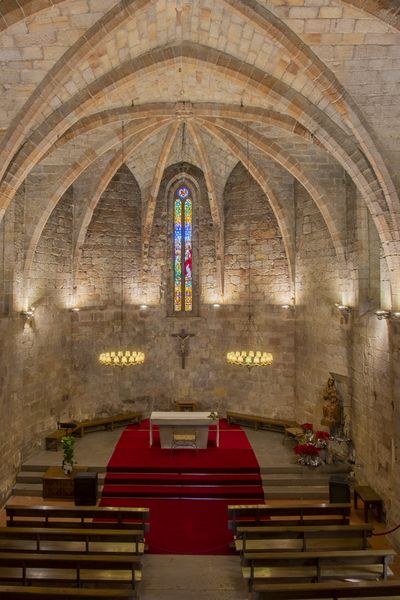
The first historical reference that we found about the church of Saint Peter of Pals is from the year 994 when Ramon Borrell and Ermesinde of Carcassone -the Counts of Barcelona, Girona and Osona- donated the tower and the church of Pals to the bishop of Girona. In the 12th century, it was replaced by a new Romanesque church, whose main elements are the trumpeted window on the west facade and the corbel carved with a female figure, under the choir.
The current Gothic temple (15th century) has a polygonal dome covered with a ribbed vault and divided into three bays by pointed arches. We highlight the keystone above the presbytery, where we find a slightly damaged flowered cross carved and two male faces, which represent Christ and Saint Peter. We also highlight the second keystone, where we find a medallion with a Pantocrator. On the southern facade, we find a porthole with openwork decoration of a four-leaf clover. On the western facade, a rose window stands out.
The 1773 doorway is in the Baroque style. It has a curved pediment, and it's crowned by three pinnacles with ornamental balls that outline a triangle. A sculpture of Saint Peter presides, between two volutes and two columns, dressed in papal habit, seated in the bishop's chair of Rome.
The bell tower and the roof that raise the building were added in the 18th century. The Baroque altarpiece, the stained-glass windows and, practically, all the imagery were destroyed by fire on July 23rd, 1936, shortly after the outbreak of the Spanish Civil War. All the images and stained-glass windows are from after the 1940s. The organ was built in 1983 by the prestigious German organ builder, established in El Papiol, Gerhard Grenzing.
